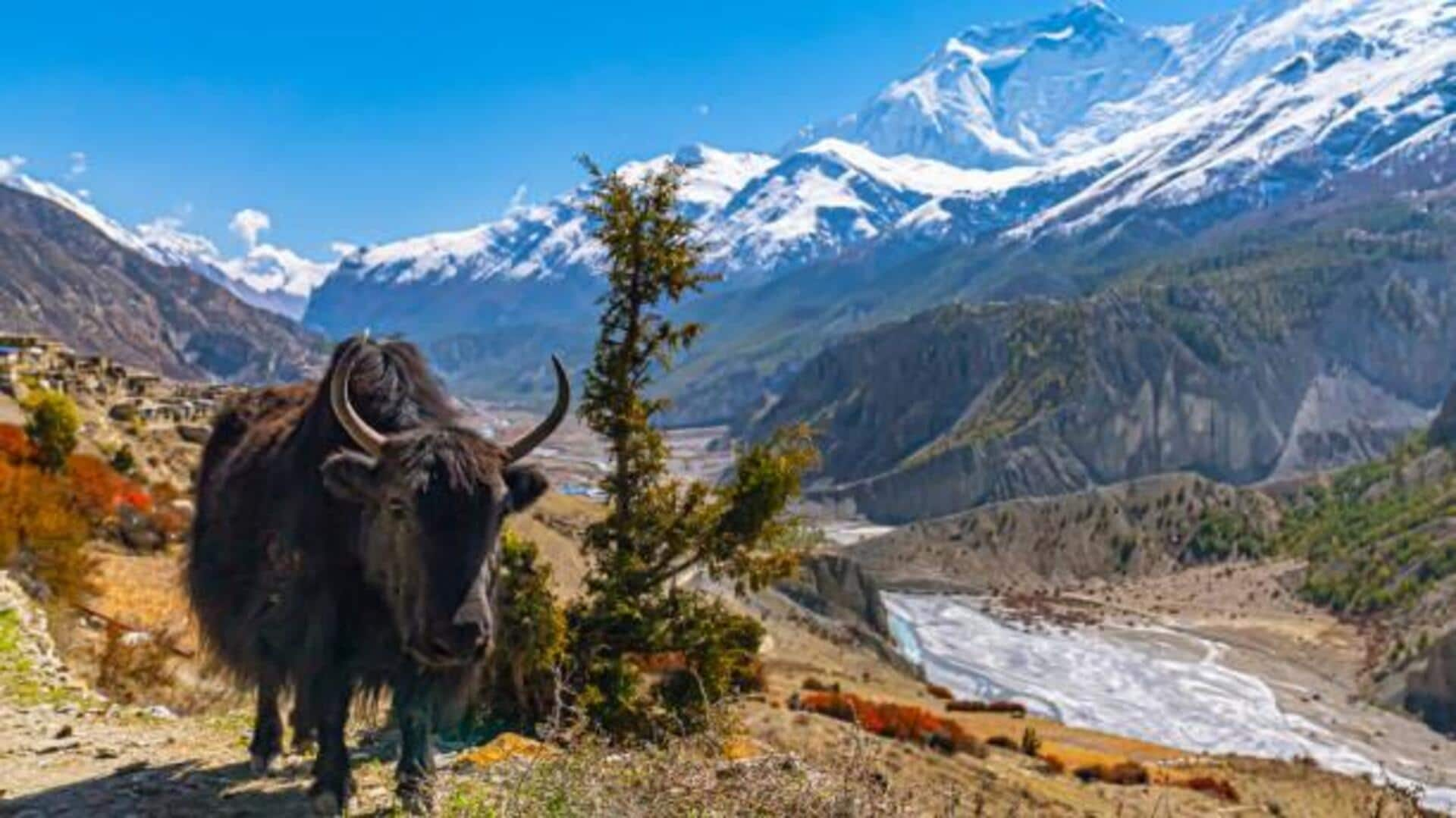
Yak treks: A unique way to explore the Himalayas
What's the story
Tibetan yak treks are one of the best ways to witness the Himalayas' beauty. You can explore the remote areas and even interact with the local communities. As yaks carry your supplies, it makes the high-altitude travel easy. Whether you are a seasoned trekker or an absolute beginner, these treks promise you unforgettable adventures.
Route selection
Choosing the right trek route
Selecting the right trek route is key to a successful adventure. Popular routes include those around scenic mountains and serene lakes. Each route offers different levels of difficulty and varying scenery. It's important to keep your fitness level and experience in mind while choosing a trek. Some routes may require permits or guides due to their remoteness.
Altitude awareness
Understanding altitude challenges
Altitude can be a major problem on Tibetan yak treks. Above 3,000 meters, the air gets thinner and can cause altitude sickness, if you're not careful. Acclimatization days are generally incorporated into the itineraries to help trekkers adapt gradually. Staying hydrated and being able to detect symptoms early on are essential to tackle altitude problems.
Packing tips
Packing essentials for yak treks
Packing wisely is key to your comfort on the trek. Layered clothing is advisable, owing to changing temperatures at high altitudes. Sturdy hiking boots lend required support on a rough terrain, while sunscreen shields you from harsh UV rays at higher altitudes. A good quality sleeping bag keeps you warm at cold nights in tents or basic lodges en route.
Cultural exchange
Interacting with local communities
Interacting with local communities during Tibetan yak treks provides profound insights into their traditional lifestyles. Yaks form an integral part of their economy, culture, and spirituality. It is essential for visitors to respect local customs and traditions to avoid misunderstandings. This encourages mutual appreciation and understanding across diverse cultures. Such engagement leads to a globally interconnected, respectful and harmonious world.